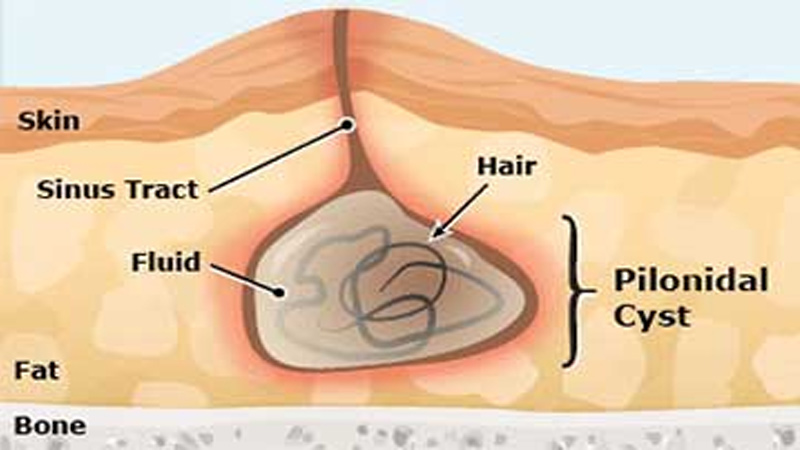
Pilonidal sinus disease is a chronic disease of the sacrococcygeal region associated with frequent recurrence. Although its cause remains unknown, the increased hormone levels associated with puberty, the growth of thick hair, long periods of sitting, and friction imparted by tight‐fitting clothing may be in play.
Other risk factors are hirsutism, obesity, and a family history of the disease. As the cause of the disease, hairs falling from head, neck, and back are placed in the intergluteal area and hairs that penetrate the skin initiate foreign body reactions. In the affected area, the hairs are moist, sweaty, and unhygienic, readily triggering development of the subcutaneous skin cysts and sinuses characteristic of the disease, which (in the gluteal region) present as asymptomatic pits, painful abscesses, or sinuses associated with purulent serous discharge.
under general anesthesia, The external sinus orifices were excised by the scalpel. Then, a 1,470‐nm diode laser probe was routed through the sinus to the top of the sinus path and activated to deliver approximately 12–14 W energy. During activation, the probe was retracted along the sinus tract at an approximate rate of 1 cm/6 s. The energy homogeneously destroyed the internal inflamed tissue and seal the tract. The procedure was repeated for all sinuses, and the sinus paths were closed completely. Each tract was obliterated using an average of four pulses (total, 324 J; pulse duration, 6 s; pulse energy, 13.5 W × 6 s = 81 J).
As the professional laser manufacturer, our PIOON can provide the high-quality laser device. Applications of laser in proctology are mainly for soft tissue lesions such as hemorrhoids, fistulas, condyloma,ana lfissure, sinus pilonidal, etc. Cutting, vaporizing, and coagulating can be achieved for treatment by precisely controlling thelaser output on tissues with cooperation ofendoscope and fibers.